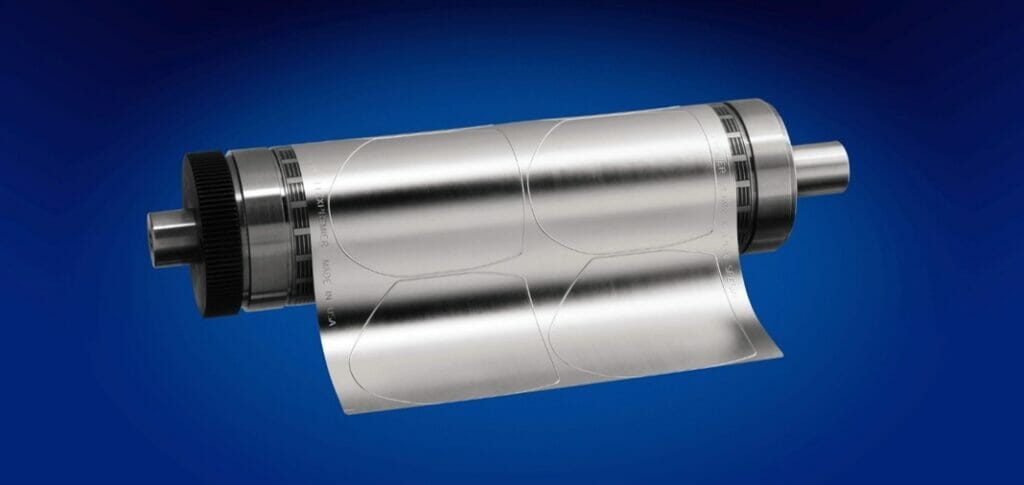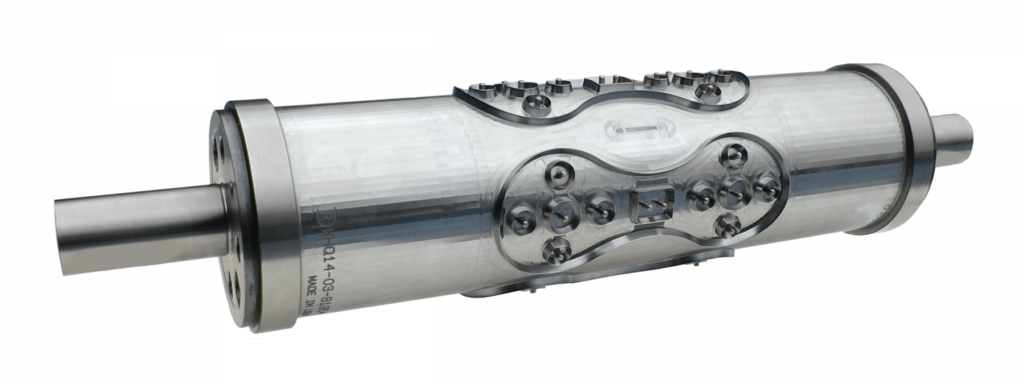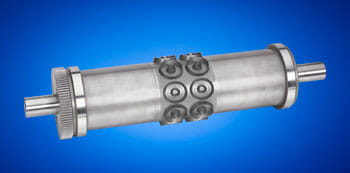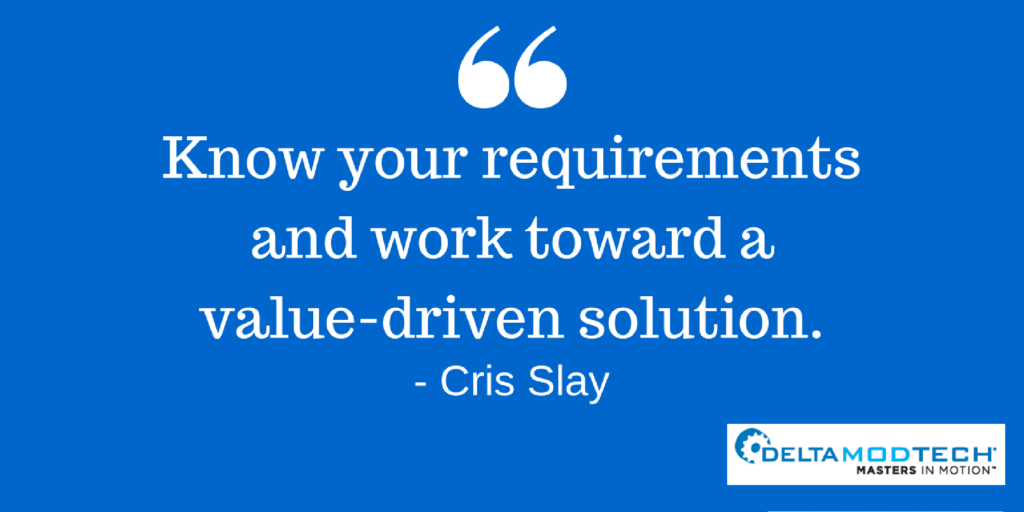
How to Choose the Right Rotary Die for the Job
RotoMetrics has been manufacturing dies for a looong time. Established in 1957 in the St. Louis, Missouri area, RotoMetrics has a presence on 5 continents, servicing more than 5,000 customers in 140 different countries. They know a thing or two about rotary dies, which is why we reached out to RotoMetrics’ Cris Slay for in-depth insights.
Let’s start with a broad overview for those of you new to industrial die cutting, and then detail the advantages of the different types of rotary dies.
Die Cutting Definition: What is the Die Cutting Process?
The die cutting process involves using a die to cut specific shapes from webs of different materials. The materials used – such as foil, paper, cloth, fiberboard, plastic – primarily dictate the type of die used for the job.
Industrial die cutting is typically done either on flatbed or rotary presses. Flatbed die cutting does not have the efficiency of rotary die cutting, and is used primarily when the advantages of rotary die cutting cannot be applied to the material or the application.
Two Types of Rotary Die Cutters: Flexible and Solid
Rotary die cutting involves either a flexible or solid rotary die. These dies are both cylindrical dies.
A flexible die is made of a thin sheet of steel, and folds around a magnetic cylinder.

A solid die is a solid steel cylinder, and is traditionally used in more long run applications for extended die life.

Which Rotary Die Should You Choose?
For the most part, both dies will convert most types of materials. According to Cris Slay of RotoMetrics, the vast majority of materials can be converted with a flex die. These include:
- Papers
- Films
- Pressure-sensitive labels
- Through cut parts
However, there are several different situations that dictate whether you should choose one type of die over the other. Let’s break down the advantages of each type of die.
Advantages of Flexible Dies

Flexible dies are less expensive
Because flexible dies are a thin sheet of metal as opposed to a solid drum, they’re less expensive to manufacture and to ship.
Flexible dies can be created and delivered quickly
While Cris Slay notes that delivery time is based on the type of die being manufactured, the majority of flexible dies can be shipped within 48 hours and many can be produced and shipped in the same day.
Flexible dies can be durable
While you are limited in the types of steels you can choose, hardening on the tips of the blade and other surface treatments can increase longevity, including non-stick coating.

Flexible dies cover most materials
Flexible dies are used for to-liner cutting in the majority of typical label jobs. As we mentioned, you’re likely to cover most of the typical converting tasks with flexible dies.
Flexible dies require less storage and floor space
Inventory can be an issue with larger solid rotary dies. Flexible dies can be stacked or stored on racks requiring less floor space.
However, it must be noted, in a conventional environment involving multiple magnetic cylinders, the supporting roll on which the flexible die is attached must be held in inventory. Typically, one for each circumference will need to be produced. For initial conversions to flexible die usage, this can be a very significant investment.
Advantages of Solid Dies

Solid dies are superior at material handling, or scrap removal
Slug removal or material management requires drilling into solid dies and installing equipment to aid in the removal of scrap or movement of small parts along the web. We’ve touched on slug removal in a previous post. Later in this post, Cris Slay details RotoMetrics’ pin-eject technology that dramatically improves material handling.
Solid dies have the ability to convert more difficult & challenging materials
Very thick materials can be difficult for a flexible die to cut. Solid dies give you the ability to cut through very abrasive materials or substrates with messy adhesives, multi-layer constructions and gasket materials.
Solid dies are more durable
Naturally, solid dies are much more durable. They’re better suited to withstand high pressure applications and more abrasive materials. “It depends on the materials you choose, but typically a solid die will last 2-3 times longer than a flexible die,” said Cris Slay.
In addition, a solid die can be “re-sharpened” multiple times. A flexible die must be replaced when worn.

Solid dies are more flexible
Aren’t flexible dies, you know, more flexible? Literally, they are, but solid rotary dies can be constructed out of a variety of different steel types. It allows for different blade shapes, hardness, and material movement options.
The Key to Choosing the Right Rotary Die: Know Your Materials
Knowing your materials is critical when choosing the right die, and it requires a holistic approach. “Analyze your entire process. Know your requirements, and work toward a value-driven solution,” Slay said.

To help customers find the right materials, RotoMetrics has a large materials database. Material providers will visit often during the year with new formulations, allowing RotoMetrics to conduct upfront tests to head off problems down the road.
The testing is extremely important, as customers are pushing material manufacturers to develop new solutions. Naturally, this leads to pushing the envelope on what can and can’t be converted by a rotary die.
Innovations in Rotary Dies
To keep pace with demand for new solutions, innovation is critical. We touched on how to create innovation in a highly-technical field in a previous post, and RotoMetrics is no stranger to the process.
For example, the release of pin-eject technology has revolutionized the material movement aspect with solid rotary dies. It allows for a much simpler slug removal process.
Here’s a video on the pin-eject technology:
https://www.youtube.com/watch?v=QOw2WUuEVBE
For flexible rotary dies, Slay hinted at some developments underway within RotoMetrics that should have a significant impact on flex die performance. Those enhancements are scheduled for 2017.
Listen to this in-depth interview with Cris Slay on both of these innovations.

Semi-Rotary Magnetic Cylinder: Using Innovation to Reduce Costs and Improve Flexibility
Rotary dies are not necessarily an either / or option between solid and flexible dies. Slay points out that alternative approaches like Delta ModTech’s own semi-rotary die technology can provide an alternative solution.
Semi-rotary uses a one-sized magnetic cylinder, and applies different repeat flexible tools to the cylinder. The accumulator is used to control the material. The material then matches machine speed when the tool is in contact, and backs up to compensate for the gap in the tool.
Semi-rotary technology “obsoletes” the requirement of having multiple, high cost, magnetic cylinders sitting in inventory. This directly reduces tooling cost, setup time, and tooling storage. The tooling cost will be significantly lower because one cylinder can run different repeat parts by simply changing the flexible tool.
Setup time is reduced because the operator can, in minutes, replace the flexible tool, rather than replacing a full rotary tool or changing over to a different magnetic cylinder.
Making the Call on Rotary Dies: Factor in All the Variables
As Slay mentioned earlier in the post, a holistic approach to establishing the true value of your rotary die is required. It involves factoring in multiple variables, from materials to shipping to inventory.
The world of die cutting machines is in a constant state of evolution. Be sure to also lean heavily on the vendors who specialize in these areas. Integrate their advice into your overall cost analysis. The more upfront work you do, the easier it will be to choose the right die for the job.
OVERCOME YOUR BIGGEST CONVERTING AND PACKAGING CHALLENGES
Published on Jan 09 2017
Categories: Delta ModTech Blog, Die Cutting, Reducing Scrap

